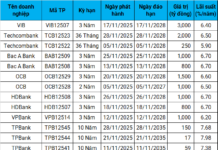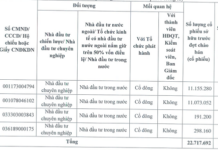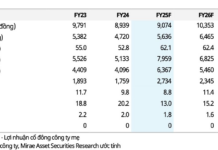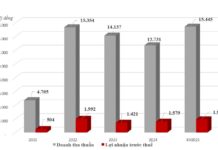Over ten abandoned projects in a commune
The Tiền Phong Flower Village urban area project (in Tiền Phong commune, Mê Linh district) was approved by the provincial People’s Committee in 2005 with a total investment capital of 920 billion VND, with TP company as the investor. The project was expected to start construction in 2005 and be completed in 2013, but until now, the project is still a vacant land. Currently, local people are using the land to graze livestock and grow vegetables.
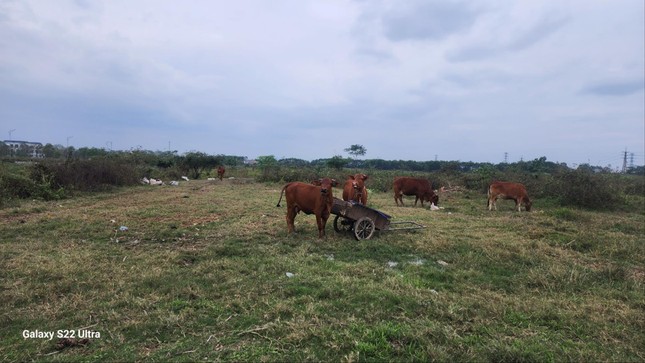
The Tiền Phong Flower Village project is still a vacant land that local people are using to graze livestock.
Mr. Trần Văn Mạnh (in Tiền Phong commune) said that the whole area of this land used to be “fertile rice fields”. When the State reclaimed it, farmers gave the land to businesses with the hope of changing the local appearance. However, until now, the project is still abandoned, and farmers have no land for production.
The Minh Đức residential area project (in Tiền Phong commune, Mê Linh district) is invested by Minh Đức Trading and Investment CP company as the investor. The project was approved by the Vinh Phuc provincial People’s Committee for investment policy on July 18, 2008. After many adjustments, the project has been basically built with technical infrastructure, internal transportation, green trees, electricity, and water systems. However, most of the land is still vacant.
Also in Tiền Phong commune, the high-rise apartment building and housing project for officials and workers in industrial zones, invested by 18 Development and Investment CP company, has not been implemented. Until now, the project is still abandoned. Some areas in the project are utilized by local people to grow vegetables.
The leaders of Tiền Phong commune People’s Committee said that there are more than 10 slow-paced projects in the commune. Most of these projects were approved before the time of merging into Hanoi. Among them, there are new projects currently in the land clearance phase, or have completed the land clearance but have not been implemented due to waiting for planning adjustments.
According to statistics, there are more than 60 projects in Mê Linh district that were licensed before merging into Hanoi and are still incomplete. Many other districts and communes also have similar situations. In Hà Đông district, the Hà Đông Green Tree Sports Park project was approved by the Hà Tây provincial People’s Committee for planning in 2008, with an area of about 98 hectares, but it has not been implemented yet. The Hanoi WestGate project (formerly known as the Urban Area and Services in the West of Quốc Oai) has a scale of about 44.4 hectares (in Quốc Oai district) and was approved for investment policy by the Hà Tây provincial People’s Committee in 2008. After many adjustments, until now, this project is still just a vacant land. Similarly, the Tiến Xuân Sudico urban area project, which covers an area of over 1,200 hectares and is located in Đông Xuân commune (in Quốc Oai district) and Tiến Xuân commune (in Thạch Thất district), was still abandoned (before these communes were merged into Hanoi in August 2008).
Businesses are also crying
Regarding the reasons why projects approved before merging into Hanoi are slow-paced, an investor said that after merging into Hanoi, the projects had to adjust the planning. Although Mê Linh officially merged into Hanoi in 2008, by the end of 2014, zoning plans and detailed plans were completed. Therefore, from 2008 to 2014, businesses had to wait for planning adjustments. Since then, businesses have been continuing to complete investment procedures. Moreover, there are projects that have fulfilled financial obligations and completed land clearance, but due to land service policy, when businesses brought machinery for deployment, they faced opposition from residents, leading to delays.
A representative of Development and Investment CP company, the investor of the high-rise apartment building and housing project for officials and workers (in Tiền Phong commune, Mê Linh district), said that the company had invested a lot in the project. However, over the years, the project is still just a vacant land, causing great difficulties for the company.
According to this representative, it is not that businesses do not want to work, but after merging into Hanoi, the projects had to adjust the planning. Currently, all projects have to wait for adjustments from the overall planning of the capital city that the city is implementing. “We have completed 95% of the land clearance, but the project still cannot be implemented. Only the bank interest has made the business suffer in recent years,” he said.
Regarding this issue, the Hanoi Department of Natural Resources and Environment said that there are many reasons leading to delays in the projects approved before merging into Hanoi. One of the reasons is that a large number of projects have gone through transition phases, and policies and laws have changed over time, and the implementation process has had various different levels of development. Meanwhile, procedures related to many industries and the adjustment of many legal documents vary.
According to the Hanoi Department of Planning and Architecture, one of the reasons for the current situation is the difficulty in land clearance. Some localities are still not proactive and lack determination in directing and organizing land reclamation, compensation, support, and resettlement. Some large-scale projects have been implemented for many years and have been affected by different compensation, support, and resettlement policies, affecting the rights of land owners for compensation, leading to complaints, lawsuits, and affecting social security and order. Moreover, the dossier of changing the purpose of over 10 hectares of land for rice cultivation still has many difficulties and obstacles; the procedure is prolonged through many ministries and branches, leading to many slow-paced projects.
According to statistics, by the end of 2023, there are 712 slow-paced projects in the city. In the 15th session of the Hanoi People’s Council, Mr. Dương Đức Tuấn, Vice Chairman of the Hanoi People’s Committee, said that many factors were causing the projects to be slow-paced. Among them, most of the slow-paced projects have undergone multiple adjustments, even some projects have had to adjust 5-6 times, each time taking a considerable amount of time. In addition, land clearance encounters many difficulties due to complaints and denunciations. Meanwhile, each project has its own characteristics, and different types of land have different time periods and procedures…












